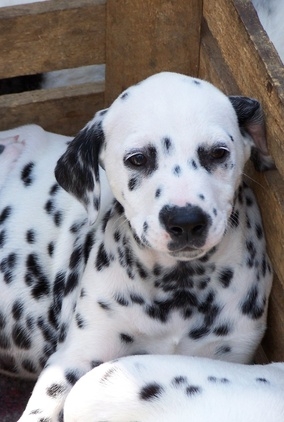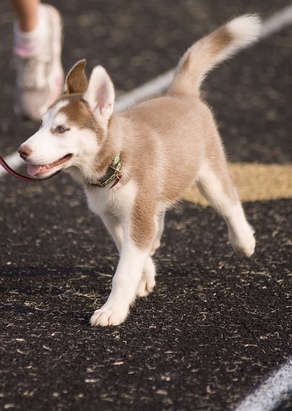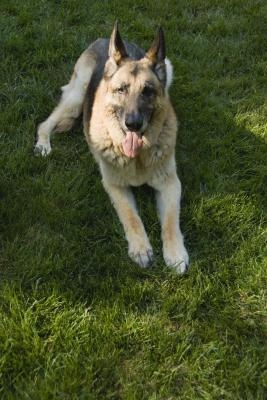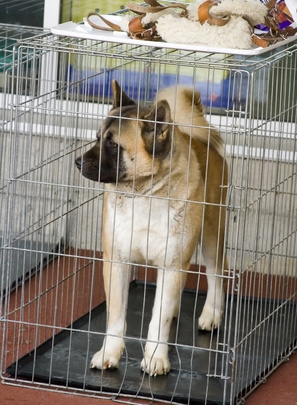It's agreed, we love dogs, no question. But there's a certain type we have some problems with -- the out-of-control pet who puts his trademark on doors and chews up carpets and never gets stopped because he's gotten control of his owner's home. From when they're only puppies, dogs are in demolition mode and you've got to control them. If you can't do that, then prepare for an attack of nerves every time he comes towards your new table!
We want our pet to be the neat-and-tidy exception, dogs who chew and scratch the rugs and furniture can be found everywhere. They simply just don't seem to understand their owners' prayers that they would leave their wild side for when they're outside.
In almost all cases, yes . If you have the patience and know what you're doing, your dog can be taught to keep his claws and teeth out of your furniture.
One thing's for certain your dog is pulling at your new furniture for a good reason. He is not upset and trying to repay you for something, as a spiteful child might when upset. Dogs don't do that -- not for nothing they are called our best friend. No, a dog claws on furniture because he's been left alone unattended, or is insufficiently stimulated. Malice and revenge are not reflex doggie instincts.
Most vets say that dogs chew to give themselves relief. That they're chewing to relieve tension, or take the edge off a heightened stress level. A dog will have this emotional response. They're normal. So, get used to it that he will rip things up. Of course, if you own a cat you will recognize this behavior when it lazily stretches and digs her claws into a rug or back of a chair. Dogs do this also, and chew and wrestle with things close at hand -- too bad if its your best chair
You need to accept that your dog will want to tussle and savage something. So train him to do it on something that is not a carpet or a piece of furniture. Give him a toy , for example, and teach him that when he feels the urge to rip something apart he has to do it on that toy. He's got to eventually realize that the best furniture pieces are not for marking.
Find ways to reward your dog for using the toys instead of the furniture. That means, don't give him unsupervised play until he has learned to be "responsible" with it. Allocate an area or a room where he can play, pile his toys in that area, (and this is the hard part) get down there with him when he is playing and reward him each time he chews on the right object.
Your dog will also need help outside the home, because he can be just as destructive on your lawn as on your carpet. What you need to do is build a play area outside, and train him to dig and scratch in that area, not your garden.
Here's something to consider: you probably get excited when something you've looked forward to is about to happen. Your dog does also. When you are about to come home from work, or back from picking up the kids at school, he will get revved up. And your furniture may well bear the brunt of this! But how else is he going to relieve himself? Are there some things you can do to move his excitement at those times to his toys.
A suggestion that usually works is to train him to greet your arrival with THAT toy in his mouth. He'll quickly learn this if you refuse to give him a warm greeting, or your normal enthusiastic greeting, until he has the chew toy in his teeth. First ask him to "bring" the toy and only greet him when he comes with it. It won't take long for the dog to figure out how to get that attention he wants!
Establish a system of rewards until your dog has learned to play with his toy rather than express his enthusiasm and excitement on your furniture. This is how you can have a tidy home.

 How to Train Kittens to Use the Litter Box
How to Train Kittens to Use the Litter Box
How to Train Kittens to Use the Litter Box
How to Train Kittens to Use the Litter Box
 Puppy Potty Training & Regression
Puppy Potty Training & Regression
Puppy Potty Training & Regression
Puppy Potty Training & Regression
 Puppy Training by Age
Puppy Training by Age
Puppy Training b
Puppy Training by Age
Puppy Training by Age
Puppy Training b
 German Shepherd Training & Tricks
German Shepherd Training & Tricks
German Shepherd Training & Tricks
German Shepherd Training & Tricks
 Crate Training and Crying
Crate Training and Crying
Crate Traini
Crate Training and Crying
Crate Training and Crying
Crate Traini